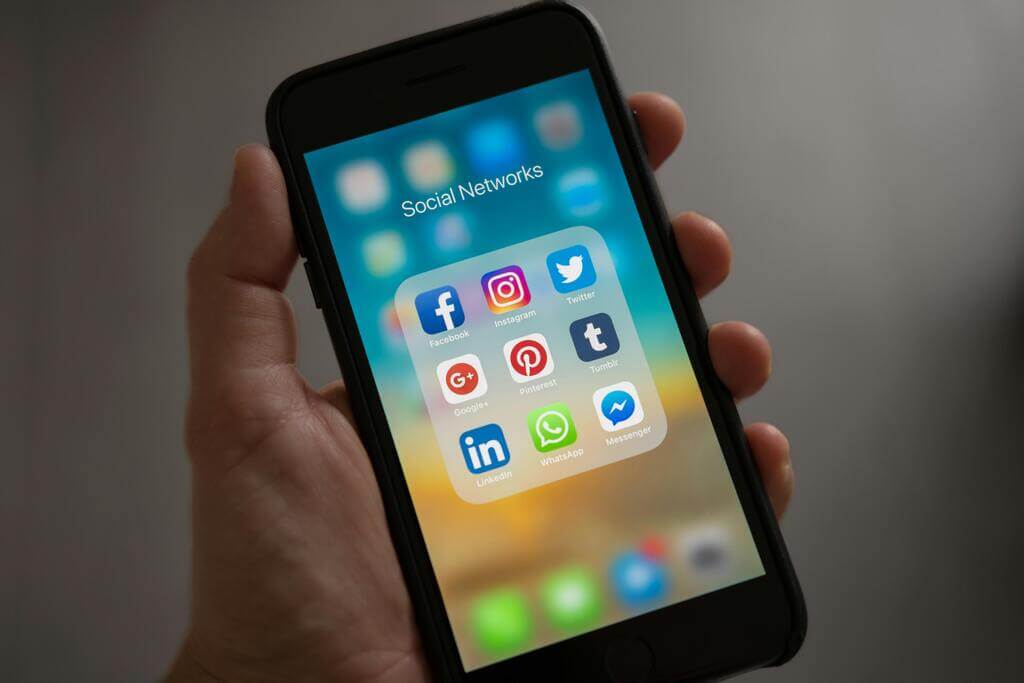So, you’ve decided to dip your toes into the exciting world of digital marketing?
Whether you’re looking to boost your online presence or simply looking to brush up on your knowledge to become a digital marketer, you’ve come to the right place!
In this beginner-friendly guide, we’ll break down the essential types, tools and a few inspiring examples to help you on your quest.
But first…
What Exactly IS Digital Marketing?
Digital marketing is the strategic use of digital channels and technologies to reach, engage and convert target audiences into loyal customers.
We’re talking tactics like creating compelling content and leveraging social media, optimizing websites for search engines and running targeted ad campaigns.
The goal?
To build brand awareness, drive traffic, and — ultimately — boost sales.
It’s all about meeting your audience where they already are (online) and delivering personalized, valuable experiences that keep them coming back for more.
The 7 Main Types of Digital Marketing
Alright, buckle up because we’re about to dive headfirst into the wild world of digital marketing.
It’s a jungle out there, but don’t worry, we’ve got your back.
We’ll navigate through the 7 main types of digital marketing and show you how each can help you conquer your business goals.
Starting with…
1. Content Marketing

Content is king, right?
Well, content marketing is all about creating valuable, relevant content to attract and retain your target audience.
We’re talking blog posts, videos, infographics, podcasts — you name it.
And the goal?
To provide your audience with information that educates, entertains or solves their problems.
In turn, you can establish yourself as a thought leader in your niche, build trust and keep your audience coming back for more.
2. Search Engine Optimization (SEO)

SEO involves optimizing your website and content to rank higher in search engine results pages (SERPs).
How?
By pinpointing what your target audience is searching for and creating content that addresses their needs, you’ll improve your visibility and drive organic traffic to your site.
But that’s just the beginning…
You’ll also need to ensure your website is technically sound, with a clean structure and lightning-fast load times.
Plus, don’t forget about building high-quality backlinks from other reputable websites in your niche.
3. Social Media Marketing

Want to reach your target audience, increase brand awareness and drive traffic to your website?
Social media marketing is your golden ticket.
Platforms like Facebook, Twitter (X) and LinkedIn offer a direct line to your ideal customers, allowing you to engage with them on a personal level.
Craft compelling content, run targeted ads and build thriving communities around your brand to foster loyalty and keep your audience coming back for more.
The trick is understanding where your audience hangs out and tailoring your approach to each social media platform.
4. Influencer Marketing

Imagine having a squad of influential people spreading the word about your brand to their engaged followers.
That’s the power of influencer marketing.
By partnering with influencers who have a strong social following, you can tap into their engaged audience and showcase your brand in an authentic, relatable way.
However, the key is to find influencers whose values and content align with your brand, ensuring a genuine connection with your target audience
5. Paid Advertising

Paid advertising, also known as pay-per-click (PPC) advertising, is like renting a billboard on the internet.
You place ads on search engines (like Google Ads), social media platforms or other websites, targeting specific audiences based on demographics, interests or behaviors.
And the best part?
You only pay when someone clicks on your ad.
It’s a powerful way to drive targeted traffic to your site and get your brand in front of the right people.
Just make sure your ads are click-worthy!
6. Email Marketing

Email marketing is a powerful digital marketing tool that allows you to send targeted, personalized messages straight to your subscribers’ inboxes.
You see, by segmenting your email list based on subscriber preferences and behaviors, you can deliver highly relevant content that resonates with each individual.
It’s a direct, measurable way to nurture leads and keep your brand top-of-mind with your audience.
Plus, who doesn’t love seeing a non-spammy email from their favorite brand?
7. Affiliate Marketing

Affiliate marketing is akin to having a team of salespeople working for you, but instead of a salary, they earn a commission for each sale or lead they generate.
It’s a cost-effective way to expand your reach and drive sales without breaking the bank.
Yet, the key is finding affiliates who strongly connect with your target audience and can authentically promote your brand.
Just ensure they’re not too “salesy,” or your audience will likely be put off.
5 Must-Have Digital Marketing Tools
To succeed in the digital marketing landscape, you need the right tools in your arsenal.
So, to help you rise above the noise and achieve your digital marketing goals, we’ve compiled a list of the 5 must-have tools.
Let’s take a closer look at each one.
1. Ahrefs

Ahrefs is an all-in-one SEO tool that helps you spy on your rivals’ backlinks, keywords, and content strategies.
With Ahrefs, you can uncover untapped keyword opportunities, track your rankings and even analyze your competitors’ social media performance.
Note: plans start at $99/month for the Lite version and go up to $999/month for the Enterprise plan.
If that’s a bit steep for your budget, you can check out alternatives like Semrush (starts at $119.95/month) or Moz Pro (starts at $99/month).
2. Canva

Ever wished you could create stunning visuals without needing a degree in graphic design?
Enter Canva, the user-friendly design tool that makes you look like a creative genius.
With its vast library of templates, images and fonts, you can create eye-catching social media posts, infographics and logos in minutes.
But the best part?
Canva has a free plan that’s perfect for getting started.
If you need more features, you can upgrade to Canva Pro for $119/year or Canva for Teams at $149.90/year.
3. Google Analytics

Now, let’s talk data. Google Analytics lets you make smart decisions about your digital marketing strategy based on cold, hard facts.
It tells you everything you need to know about your website’s performance, from how many people visit to what they do once they get there.
And it’s completely free!
Plus, you can create custom reports and get real-time insights to keep you on top of your game.
4. Google Trends

Speaking of staying on top of your game, Google Trends shows you what people are searching for in real time.
You can then use this information to create timely blog posts, social media content or product recommendations that resonate with your target audience.
And just like Google Analytics, it’s completely free to use.
5. Slack

Last but not least, we have Slack. This digital marketing tool is a lifesaver for teams collaborating on marketing projects.
You can share files, ideas and updates all in one place, so everyone’s always on the same page.
Plus, Slack integrates with a ton of other tools, so you can keep all your marketing efforts in sync.
Slack has a free plan to get you started, but if you need more features, paid plans start at just $7.25/month per user.
4 Digital Marketing Examples to Inspire You
Now that we’ve covered the vital types and tools, let’s dive into real-world digital marketing examples that’ll get your creative juices flowing.
These campaigns are the crème de la crème of digital marketing, and they’ll show you just how powerful a well-executed strategy can be.
1. Airbnb: “Live There”
Airbnb’s “Live There” digital marketing campaign was a masterclass in using user-generated content to showcase the unique benefits of a product or service.
The campaign encouraged Airbnb users to share photos and stories of their travel experiences, highlighting how staying in an Airbnb allowed them to “live like a local.”
They created a sense of wanderlust and inspiration that traditional hotel advertising simply can’t match.
So, think about how you can use user-generated content to showcase the unique benefits of your product or service.
Can you encourage your customers to share their own stories and experiences?
2. Go Pro: “Be a Hero”

Next up, we have GoPro’s “Be a Hero” campaign.
This marketing masterpiece showcased the incredible footage that could be captured with a GoPro camera.
And the digital marketing campaign encouraged users to share their GoPro footage on social media with the hashtag #BeAHero.
But what makes this a truly standout example of digital marketing?
For one, it’s aspirational.
By showing off the amazing things that could be done with a GoPro, the campaign made viewers want to be part of the action.
Like Airbnb, it also leveraged user-generated content, with GoPro featuring the best user footage on its social media channels.
Ask yourself… “how could I create a sense of community around my brand?”
3. Sephora: “Beauty Insider Community”

Sephora has cultivated a thriving community of loyal brand advocates by creating a space for customer content and recommendations called…
The “Beauty Insider Community.”
It’s the go-to platform for beauty advice and inspiration.
Not only that, it’s a masterclass in digital marketing as it strengthens customer relationships and provides valuable insights into consumer behaviors.
So, take a cue from Sephora and consider how you can build a space for your customers to interact, share, and celebrate their common interests.
4. Starbucks: Unicorn Frappuccino
Last but not least, we have Starbucks’ Unicorn Frappuccino.
The limited-edition drink was only available for a few days, but it took social media by storm.
With its bright colors and whimsical name, the Unicorn Frappuccino was practically made for Instagram.
Why?
It’s buzz-worthy.
Starbucks generated a ton of excitement by creating a visually striking product unlike anything else on the menu.
People couldn’t wait to get their hands on it and share their photos on social media.
So, is there anything you could do to cook up a storm on social media?
10 Must-Know Digital Marketing Statistics
As you embark on your digital marketing journey, it’s crucial to understand the landscape and the trends shaping the industry.
These 10 digital marketing statistics will help you grasp the industry’s current state and provide valuable insights to inform your marketing strategy.
So, let’s dive in and explore our top picks…
- According to projections, by 2025, an overwhelming 72.6% of internet users will access the web exclusively through their mobile devices.
- A staggering 95% of online searchers never venture beyond the first page of search engine results.
- Businesses that leverage content marketing enjoy conversion rates that are six times higher than those that don’t.
- Compared to outbound marketing, content marketing is a more cost-effective solution, coming in at 62% cheaper.
- When it comes to effectiveness, nearly 79% of marketers rank email among their top three communication channels.
- If an email is not optimized for mobile viewing, a substantial 75% of recipients will delete it without even reading it.
- The majority of Twitter’s global user base, 73.2%, is under the age of 35, highlighting the platform’s popularity among younger demographics.
- Facebook boasts an impressive 3 billion monthly active users worldwide, as reported by Statista.
- LinkedIn has become a business hub, with over 67 million companies maintaining a presence on the platform.
- YouTube holds the distinction of being the second largest search engine globally, second only to Google.
Ready to Level Up your Digital Marketing Strategy?
Digital marketing is constantly evolving, but by focusing on the fundamentals, you can create a winning strategy for your business.
So, what digital marketing tactics have worked best for you?
Share your experiences in the comments below!
Before you go…
Get Instant Access to my FREE Dopamine Button Guide!
Inside, you’ll discover 3 little-known brain hacks that skyrocket your course engagement & sales…
Here’s the thing: the “old way” of designing and launching courses just isn’t cutting it anymore.
If you want to attract students who buy and keep buying (not to mention send referrals your way!)…
You need to do things differently.
Enter the Dopamine Button — the super-secret button in your students’ brains that you can leverage to create incredible results for them AND repeat sales for you.



























Leave a Comment